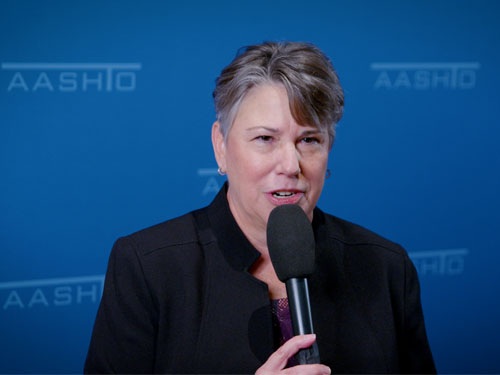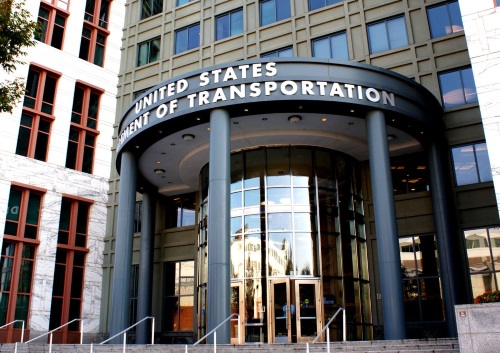The U.S. Department of Transportation issued a Request for Information or RFI on May 25 to help it to gain insight on the data and assessment tools available to assess transportation equity.
[Above photo by the USDOT]
The RFI – which closes on June 24 – is also in response to an executive order issued by President Joe Biden on January 20 to “pursue a comprehensive approach to advancing equity for all, including people of color and others who have been historically underserved, marginalized, and adversely affected by persistent poverty and inequality.”

“This request for information will help us assess the most robust data sets and methodologies available for us to measure our progress towards making the nation’s transportation systems more equitable,” noted Robert Hampshire, USDOT deputy assistant secretary for research and technology and chief science officer for the agency, in a statement.
Through this RFI, the USDOT said it “seeks information and recommendations” in the field of transportation equity from the public, including public agencies, academics involved in the study of equity in transportation decision-making, advocacy and not-for-profit institutions working in the transportation sector or the field of equity, plus state, local, tribal and territorial stakeholders.
USDOT added that it plans to use the responses to this RFI to “inform its approach” as it expands the use of data and equity-assessment methods to advance transportation equity goals.
State departments of transportation across the country are also engaging in similar diversity, equity, and inclusion or “DEI” initiatives.

For example, the California Department of Transportation launched a new Office of Race and Equity or CORE in August 2020: an office charged with advancing racial equity throughout the department’s internal and external operations.
Meanwhile, the Michigan Department of Transportation created a new executive-level position in late April to help the agency incorporate equity and inclusion in all aspects of its business.
The agency said it designed the new position of chief culture, equity, and inclusion officer or CCEIO to help it make “meaningful progress” optimizing its organizational culture, aligning equity and inclusion goals with business outcomes while responding to changes or policies that affect employee and customer populations.

“For many of us, our missions are evolving,” explained Amy Scarton, deputy secretary of the Washington State Department of Transportation during a panel discussion held in March during the 2021 virtual American Association of State Highway and Transportation Officials Washington Briefing.
“While we remain stewards of all modes of transportation we are now acknowledging work needs to be done in terms of equity, diversity, and inclusion – and state DOTs are maturing their missions to incorporate them,” said Scarton. “We look at where inclusion and workforce development goals intersect and see that there is great opportunity out there especially for the progress for our agencies,” she said.
More broadly, AASHTO’s board of directors unanimously passed a resolution during its virtual annual meeting in November 2020 pledging to address issues related to race, equity, diversity, and inclusion. The organization also agreed to address those efforts within the transportation industry with “humility, introspection, and respect, being mindful of the importance of listening to and learning” from those most adversely affected by past decisions.
“We understand that these measures depend on collaboration with all relevant stakeholders, including government, transportation partners, and the communities we serve,” the resolution stated. “We pledge to continue to collaborate closely with national, state, and regional organizations focused on those issues.”
 Top Stories
Top Stories
USDOT Makes $1.5B Worth of BUILD Grants Available
December 19, 2025 Top Stories
Top Stories

